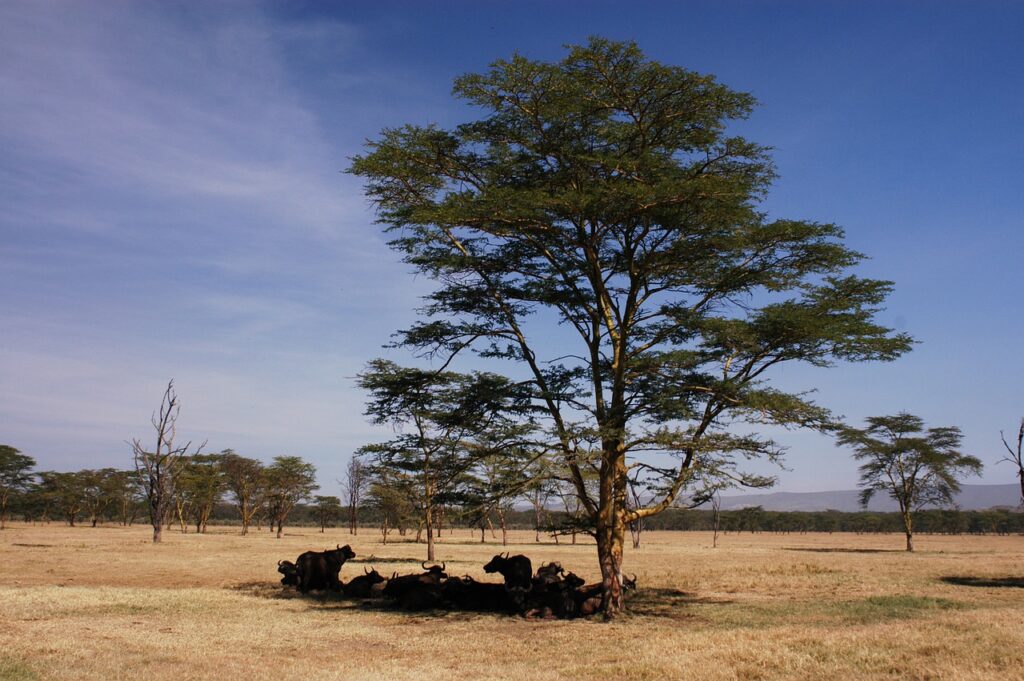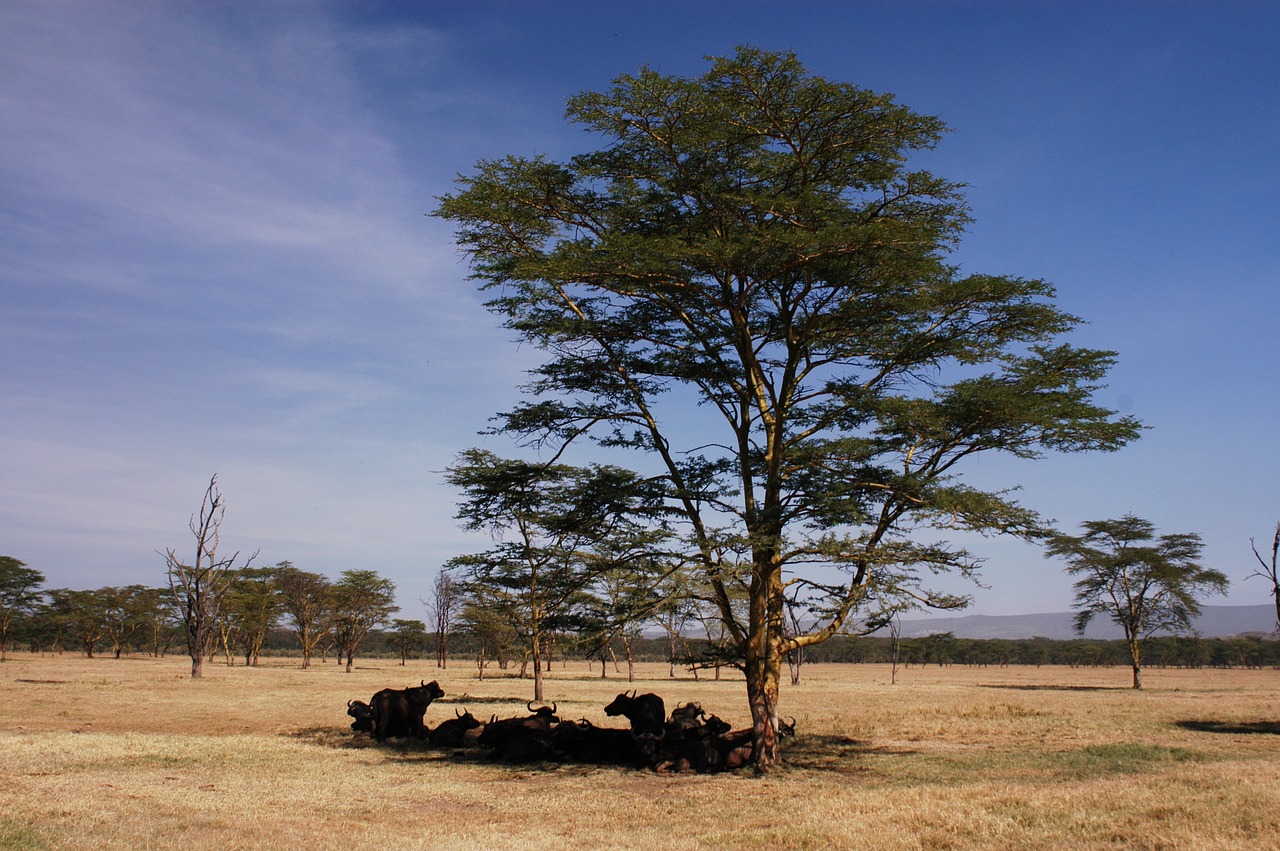In the face of a changing climate, nations around the world are working tirelessly to adapt and mitigate the impacts of this global challenge. From innovative technology solutions to policy changes and community engagement, countries are striving to find effective strategies to protect their citizens and environments. This article explores the various approaches and initiatives that countries are taking to address the impacts of climate change, highlighting the importance of collaboration and shared responsibility in creating a sustainable future for all.

Renewable Energy Transition
Investing in renewable energy sources
Investing in renewable energy sources is a key strategy for countries worldwide as they aim to mitigate climate change and reduce their reliance on fossil fuels. By allocating resources towards clean and sustainable sources of energy, countries are not only minimizing their carbon emissions but also promoting economic growth and job creation. The advancement of technologies such as solar power, wind energy, and hydroelectric power has made renewable energy increasingly accessible and cost-effective. As a result, countries are prioritizing investments in these technologies to transition their energy sectors towards a greener and more sustainable future.
Implementing renewable energy targets
To ensure a successful transition to renewable energy, countries are setting ambitious renewable energy targets. These targets serve as a roadmap for governments, businesses, and individuals to align their efforts towards a clean energy future. By implementing renewable energy targets, countries create a clear pathway to increase the share of renewable energy in their energy mix. These targets not only provide a sense of direction and clarity but also drive innovation and attract private investments. Pursuing renewable energy targets fosters a sense of collective responsibility and enables countries to take proactive measures in addressing climate change and its consequences effectively.
Promoting clean technologies
In addition to investing in renewable energy sources, countries are actively promoting clean technologies to reduce their environmental footprint. Clean technologies encompass a wide range of innovations, including energy-efficient appliances, smart grids, electric vehicles, and sustainable manufacturing processes. By encouraging the adoption of these technologies, countries aim to decrease greenhouse gas emissions, enhance energy efficiency, and promote sustainable practices across industries. Governments often provide incentives, subsidies, and grants to encourage businesses and individuals to adopt clean technologies, making them more accessible and cost-effective. Promoting clean technologies not only contributes to climate change mitigation efforts but also leads to long-term economic and environmental benefits.
Emissions Reduction Strategies
Implementing emission reduction policies
Countries are implementing emission reduction policies to tackle the growing threat of climate change. Through the establishment of regulations and standards, governments can effectively limit the amount of greenhouse gases emitted by various sectors. These policies may include emissions caps, carbon pricing mechanisms, and the promotion of cleaner production processes. By implementing emission reduction policies, countries are taking decisive action to address the root causes of climate change and transition towards a low-carbon economy.
Promoting energy efficiency measures
Promoting energy efficiency measures is a crucial element of emissions reduction strategies. Energy-efficient practices and technologies help reduce energy consumption and lower greenhouse gas emissions. Countries are encouraging individuals, businesses, and industries to adopt energy-efficient practices through awareness campaigns, educational programs, and financial incentives. This could involve upgrading infrastructure to improve energy efficiency, implementing energy-saving building codes, and promoting the use of energy-efficient appliances and lighting. By prioritizing energy efficiency, countries not only reduce their carbon footprint but also save on energy costs and enhance overall sustainability.
Encouraging low-carbon transportation
Transportation is a major contributor to greenhouse gas emissions. To address this challenge, countries are encouraging the transition to low-carbon transportation options. This includes promoting the use of electric vehicles (EVs), improving public transportation systems, and investing in cycling and walking infrastructure. Governments are providing incentives, such as subsidies and tax benefits, to make EVs more affordable and accessible. By promoting low-carbon transportation, countries can significantly reduce emissions from the transportation sector while also improving air quality and reducing dependence on fossil fuels.
Climate Resilience and Adaptation
Developing climate adaptation plans
Recognizing the need for proactive measures, countries are developing climate adaptation plans to cope with the impacts of climate change. These plans outline strategies and actions to build resilience against extreme weather events, sea-level rise, water scarcity, and other climate-related challenges. They involve assessing vulnerability, conducting risk assessments, and identifying appropriate adaptation measures for different sectors and regions. By developing climate adaptation plans, countries can enhance their ability to adapt to changing climatic conditions and reduce the potential impacts on communities, infrastructure, and ecosystems.
Investing in resilient infrastructure
Investing in resilient infrastructure is essential to withstand the impacts of climate change. Countries are incorporating climate resilience considerations into the design and construction of infrastructure projects, such as roads, bridges, buildings, and water management systems. This includes using climate data and projections to ensure infrastructure can withstand future climate conditions, implementing nature-based solutions, and enhancing adaptive capacity. By investing in resilient infrastructure, countries can minimize the risks and damages associated with extreme weather events and contribute to long-term sustainable development.
Enhancing natural resources management
To enhance climate resilience, countries are focusing on enhancing natural resources management. This includes sustainable land use practices, conservation and restoration of ecosystems, and the protection of biodiversity. By promoting sustainable agriculture, reforestation, and watershed management, countries can improve ecosystem services, enhance water availability, and reduce vulnerability to climate change impacts. Additionally, countries are exploring innovative approaches, such as ecosystem-based adaptation, which recognizes the value of nature in providing climate resilience and adaptation benefits.

International Cooperation and Funding
Participating in international climate agreements
Recognizing that climate change transcends national boundaries, countries are actively participating in international climate agreements. Agreements such as the Paris Agreement provide a platform for cooperation and collective action on climate change. By committing to emission reduction targets and other climate actions, countries demonstrate their commitment to global climate efforts. International cooperation allows countries to share knowledge, experiences, and best practices, promoting a collaborative approach to address climate change effectively.
Accessing climate finance
Accessing climate finance is crucial for countries to implement climate mitigation and adaptation measures. Many developing countries, in particular, require financial support to build climate resilience, reduce emissions, and transition to clean and sustainable development pathways. Countries are actively engaging with international financial institutions, climate funds, and bilateral partnerships to access climate finance. These funds provide resources for investments in renewable energy projects, climate adaptation initiatives, and sustainable development programs. By accessing climate finance, countries can accelerate their climate actions and ensure a just and equitable transition to a sustainable future.
Sharing knowledge and best practices
Sharing knowledge and best practices is essential for countries to learn from one another and enhance their climate change response efforts. Countries are collaborating through knowledge-sharing platforms, conferences, and partnerships to exchange experiences, research findings, and successful strategies. This sharing of knowledge allows countries to identify innovative approaches, replicate successful initiatives, and avoid reinventing the wheel. By building a global knowledge-sharing network, countries can collectively address the impacts of climate change more efficiently and effectively.
Public Awareness and Education
Raising awareness about climate change
Public awareness about climate change is crucial in mobilizing collective action and fostering behavioral changes. Countries are engaging in extensive awareness campaigns to educate citizens about the causes, impacts, and solutions to climate change. These campaigns utilize various channels, including media, social platforms, and public events, to disseminate information and increase understanding. By raising awareness, countries aim to create a sense of urgency and empower individuals to contribute to climate change mitigation and adaptation efforts.
Educating citizens about climate impacts
Alongside raising awareness, countries are actively educating citizens about the impacts of climate change on their lives, communities, and ecosystems. This education often includes communicating the risks associated with extreme weather events, sea-level rise, and shifts in ecosystems. By educating citizens about climate impacts, countries hope to foster a sense of personal connection and responsibility, galvanizing individuals to support climate action policies and make sustainable choices in their daily lives.
Promoting sustainable lifestyles
Countries are encouraging citizens to adopt sustainable lifestyles that reduce their ecological footprint. This includes promoting sustainable consumption and production patterns, advocating for waste reduction and recycling, and supporting the use of renewable energy sources in households. Governments often provide incentives and support for sustainable behaviors, such as installing solar panels or adopting energy-efficient practices. By promoting sustainable lifestyles, countries can significantly contribute to reducing greenhouse gas emissions and creating a more sustainable future for all.
Climate Data Collection and Monitoring
Establishing climate observation networks
Accurate and reliable climate data is essential for informed decision-making and effective climate change response. Countries are establishing climate observation networks to monitor and collect data on climate parameters, such as temperature, precipitation, and extreme weather events. These networks utilize weather stations, satellites, and other monitoring technologies to provide real-time data and improve climate data collection capabilities. By establishing climate observation networks, countries can enhance their understanding of climate patterns, identify trends, and develop evidence-based policies and strategies.
Strengthening climate-related data collection
In addition to climate observation networks, countries are strengthening their capacity to collect and analyze climate-related data. This involves enhancing data collection methods, improving data quality assurance processes, and integrating data from various sources. By strengthening climate-related data collection, countries can generate comprehensive datasets that inform climate models, vulnerability assessments, and adaptation planning. This data-driven approach enables countries to make informed decisions and respond effectively to the impacts of climate change.
Monitoring climate indicators
Monitoring climate indicators is key to assessing the effectiveness of climate change policies and interventions. Countries are actively monitoring a range of indicators, such as greenhouse gas emissions, temperature trends, and sea-level rise. By tracking these indicators over time, countries can evaluate the progress of their mitigation and adaptation efforts and make adjustments as necessary. Monitoring climate indicators also enables countries to identify emerging trends and prioritize actions to address the most pressing climate challenges.
Early Warning Systems
Developing early warning systems for extreme weather events
With the increasing frequency and intensity of extreme weather events, countries are investing in early warning systems to protect their populations. Early warning systems utilize meteorological data and predictive models to provide timely and accurate warnings of impending extreme weather events, such as hurricanes, cyclones, and floods. By alerting communities in advance, countries can minimize the loss of life and property and enable individuals to take necessary precautions. Developing robust early warning systems is crucial for building climate resilience and ensuring the safety of vulnerable populations.
Improving disaster risk management
Disaster risk management plays a significant role in adapting to climate change impacts. Countries are improving their disaster risk management strategies to mitigate the impacts of extreme weather events and reduce vulnerabilities. This includes implementing risk assessment processes, developing evacuation plans, and enhancing emergency response capabilities. By integrating climate-related risks into disaster risk management, countries can enhance their preparedness and response measures, minimizing the impacts on communities and infrastructure.
Enhancing emergency response capabilities
In addition to improving disaster risk management, countries are strengthening their emergency response capabilities to address climate-related emergencies effectively. This involves training and equipping emergency response teams, developing coordination mechanisms among relevant agencies, and establishing emergency response centers. By enhancing emergency response capabilities, countries can ensure a swift and coordinated response to climate-related emergencies, reducing the loss of life and protecting critical infrastructure.
Green Infrastructure and Urban Planning
Promoting green building practices
Countries are promoting green building practices to reduce the environmental impact of construction and promote sustainable urban development. Green building practices prioritize energy efficiency, use of eco-friendly materials, and sustainable design principles. Countries are implementing green building codes, providing incentives for sustainable building practices, and encouraging the use of renewable energy in buildings. By promoting green building practices, countries can reduce energy consumption, minimize waste generation, and create healthier and more sustainable communities.
Implementing sustainable urban planning
Sustainable urban planning is crucial for creating resilient and livable cities in the face of climate change. Countries are implementing sustainable urban planning practices that integrate climate considerations into land use, transportation, and infrastructure development. This includes promoting compact and walkable cities, enhancing public transportation networks, and preserving green spaces. By implementing sustainable urban planning, countries can reduce greenhouse gas emissions, improve air quality, and enhance the quality of life for urban residents.
Managing urban heat islands
Cities often experience higher temperatures compared to surrounding rural areas, a phenomenon known as urban heat islands. To mitigate the impacts of urban heat islands, countries are implementing strategies to manage heat-related risks in cities. These strategies can include promoting the use of reflective surfaces, green roofs, and urban forestry to create cool and shaded areas. Additionally, countries are implementing heatwave response plans, improving access to cooling centers, and developing public awareness campaigns to educate citizens about the risks of extreme heat. By managing urban heat islands, countries can create more comfortable and climate-resilient cities.
Protection of Natural Resources
Preserving biodiversity and ecosystems
Countries are prioritizing the preservation and restoration of biodiversity and ecosystems as critical components of their climate change adaptation strategies. Preserving biodiversity helps maintain healthy ecosystems that provide essential services, such as carbon sequestration, water regulation, and natural disaster mitigation. Countries are designating protected areas, implementing sustainable land management practices, and promoting conservation efforts to safeguard biodiversity and ecosystems. By preserving biodiversity and ecosystems, countries can enhance climate resilience and ensure the long-term sustainability of natural resources.
Conserving water resources
Water scarcity is a pressing issue exacerbated by climate change. Countries are implementing water resource management practices to conserve water, ensure equitable access, and enhance water security. These practices can include rainwater harvesting systems, efficient irrigation techniques, and water demand management policies. By conserving water resources, countries can enhance their resilience to droughts, reduce energy consumption associated with water treatment and distribution, and safeguard this vital resource for future generations.
Sustainable forest management
Forests play a crucial role in carbon sequestration, biodiversity conservation, and climate regulation. Countries are implementing sustainable forest management practices to ensure the long-term health and resilience of forest ecosystems. This involves promoting responsible logging practices, reforestation and afforestation initiatives, and community-based forest management. Sustainable forest management not only contributes to climate change mitigation but also provides economic opportunities, supports local livelihoods, and protects the cultural significance of forests.
Community Engagement and Participation
Including local communities in decision-making
Engaging local communities in decision-making processes is essential for effective climate change adaptation and mitigation. Countries are recognizing the importance of local knowledge, expertise, and perspectives to develop context-specific solutions. By involving local communities in decision-making, countries ensure that climate actions address their unique needs, priorities, and vulnerabilities. This participatory approach fosters a sense of ownership and empowerment among communities, enhancing the effectiveness and sustainability of climate change initiatives.
Supporting grassroots climate projects
Grassroots climate projects initiated by local communities play a vital role in building climate resilience. Countries are supporting these projects through funding, capacity building, and technical assistance. Grassroots projects can encompass initiatives such as community-based renewable energy projects, climate-smart agriculture, and nature-based solutions. By supporting grassroots climate projects, countries empower local communities to take action, build resilience, and contribute to the overall climate change response.
Fostering collaborations with indigenous groups
Indigenous groups have long-standing knowledge and relationships with their surrounding ecosystems. Recognizing the importance of indigenous knowledge, countries are fostering collaborations with indigenous groups in climate change adaptation and mitigation efforts. These collaborations involve integrating indigenous practices into climate strategies, respecting indigenous rights and traditional land management systems, and promoting indigenous-led sustainable development initiatives. By working with indigenous groups, countries can benefit from their traditional knowledge and wisdom, enhance ecosystem stewardship, and promote social and environmental justice.
In conclusion, countries are implementing a wide range of strategies and initiatives to adapt to the impacts of climate change. These efforts encompass investing in renewable energy sources, implementing emission reduction policies, developing climate adaptation plans, participating in international cooperation, and raising public awareness. By embracing these comprehensive approaches, countries can proactively address climate change, build resilience, and ensure a sustainable future for generations to come.




